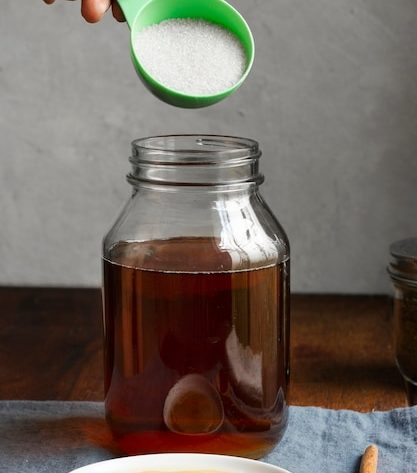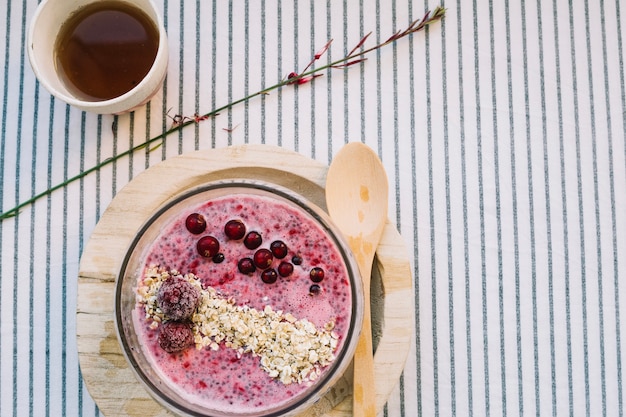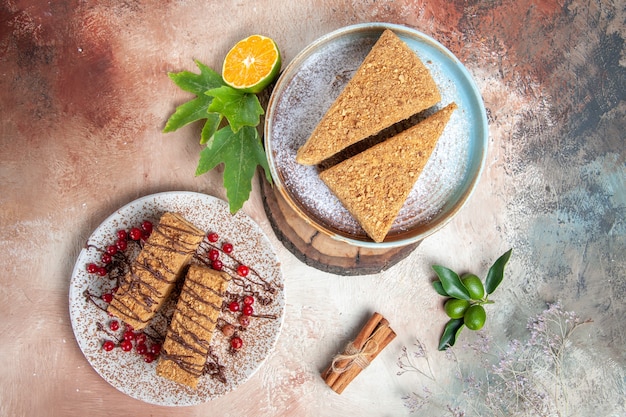Best Alternatives to Molasses for Your Baking and Cooking Needs
In the realm of cooking, the right ingredient can make all the difference in flavor and texture. While certain elements have become staples in kitchens worldwide, there are occasions when they may be unavailable or simply not to your taste. Exploring alternative options allows one to maintain the integrity of a dish without compromising on quality or satisfaction.
Finding the perfect match for a traditional sweetener requires a blend of creativity and knowledge. The essence of each substitute can vary significantly, offering unique benefits that might elevate your dishes in unexpected ways. From enhancing sweetness to adding complexity to flavors, there is a wide array of choices to consider.
Transitioning from one ingredient to another may seem daunting, but with a little guidance, it can turn into an exciting culinary adventure. Whether you’re on a quest for a healthier option or simply seeking something different, the myriad of alternatives is sure to inspire your next cooking endeavor.
Understanding the Role of Best Molasses
In culinary practices, a thick, dark syrup derived from sugar extraction serves multiple purposes. It not only enhances flavor but also contributes to texture and color in various dishes. This ingredient has a unique profile that can impart a rich, caramel-like taste, making it a favored choice in both sweet and savory preparations.
Flavor Enhancer and Sweetness
This syrup brings a deep sweetness that is distinct from refined sugars. Its complex flavor notes add a layer of richness and depth, allowing it to stand out in baked goods, sauces, and marinades. The distinct taste can transform simple dishes into extraordinary culinary experiences.
Nutritional Benefits
Beyond its flavor attributes, the ingredient is also packed with essential minerals and vitamins. It contains elements such as iron, calcium, and potassium, contributing health benefits that go beyond mere sweetness. This makes it an appealing option for those looking to enrich their meals with additional nutrients while enjoying its unique taste.
Natural Sweeteners for Baking
Incorporating healthier alternatives into your baking can enhance flavors while providing various benefits. Emphasizing natural ingredients allows for a delightful combination of taste and nutrition, perfect for a range of culinary creations.
Popular Choices
- Honey: A versatile sweetener with unique flavors, ideal for muffins and breads.
- Maple Syrup: Offers a rich taste, perfect for pancakes and baked goods.
- Agave Nectar: A low-glycemic option that works well in cakes and cookies.
- Coconut Sugar: With a caramel-like flavor, it’s great for brownies and bars.
- Stevia: A calorie-free choice, suitable for various desserts and sweet snacks.
Considerations When Using Natural Sweeteners
- Adjusting Quantities: Each sweetener has a different level of sweetness; adjustments may be needed.
- Moisture Content: Some sweeteners can add additional moisture; reduce other liquids accordingly.
- Flavor Profile: Consider the distinct taste of each option to enhance your dish.
Experimenting with these natural ingredients can open up a world of flavors and improve the overall quality of your baked goods. Whether you seek to modify a classic dish or create something entirely new, the right sweetener can make all the difference.
How to Choose the Right Substitute
Selecting an appropriate alternative in cooking can significantly impact the flavor, texture, and overall success of a dish. Understanding the unique characteristics of each option will help you make informed decisions for your culinary creations.
Consider Flavor Profile
Different alternatives offer varying tastes that can enhance or change the essence of your dish. When assessing your options, consider the following:
- Sweetness Level: Evaluate how sweet the alternative is compared to the original ingredient.
- Distinctive Flavors: Analyze whether the substitute has additional flavors that complement or overpower your dish.
- Temperature Sensitivity: Some might alter their taste when cooked, affecting the final result.
Assess Texture and Consistency
The texture of an alternative can influence the mouthfeel and appearance of your dish. Keep these factors in mind:
- Viscosity: Determine whether the thickness is suitable for your needs.
- Liquid vs. Solid: Assess if you require a fluid alternative or a drier option.
- How It Integrates: Consider how well the substitute will blend with other ingredients in your mixture.
By taking into account the flavor, texture, and consistency of each alternative, you can ensure a successful transition that maintains the integrity of your culinary endeavors.
Top Alternatives for BBQ Recipes
When it comes to grilling and barbecue, the right ingredients can elevate the flavors of your dishes. Many alternatives can be incorporated to achieve that sweet, tangy, and rich profile typically associated with traditional options. Here are some options that can enhance your BBQ experience.
- Honey: Its natural sweetness complements meat beautifully and can provide a caramelized finish when grilled.
- Maple Syrup: This adds a unique depth of flavor, perfect for marinades and glazing meats.
- Agave Nectar: A lighter sweetener that works well in BBQ sauces, offering a distinct taste.
- Brown Sugar: Easily combines with spices, creating a delicious rub for your meats.
- Fruit Juices:
- Apple juice brings a mild sweetness.
- Pineapple juice adds a tropical flair.
- Orange juice can give a citrusy punch.
- Coconut Sugar: A less processed option that provides a caramel-like flavor, ideal for grilling.
- Barbecue Sauce: Many varieties include similar flavors and can serve as a sweet and savory base.
- Sorghum Syrup: A regional favorite with a strong, earthy sweetness, making it a great option for marinades.
- Rice Vinegar with Sugar: This combination can mimic the flavor profile while adding tanginess.
- Caramelized Onions: When cooked down, they become sweet and add depth to any BBQ dish.
Experimenting with these alternatives can lead to exciting and flavorful outcomes during your grilling endeavors. Whether you’re marinating meats or preparing sauces, these selections are sure to impress. Enjoy your outdoor cooking!
Using Honey as a Flavor Enhancer
Honey is a natural sweetener that brings a unique depth of flavor to a variety of dishes. With its rich taste and versatility, it can easily elevate many culinary creations. Its ability to complement both sweet and savory ingredients makes it a popular choice among cooks and bakers alike.
When incorporating honey into your dishes, consider the following characteristics:
- Flavor Profile: Honey offers a range of flavors depending on its source, from floral to fruity, which can add complexity to your meals.
- Sweetness Level: It is typically sweeter than sugar, so using less can achieve the desired sweetness without overpowering the other flavors.
- Texture: Honey is viscous, which can enhance the mouthfeel of sauces, marinades, and baked goods.
Here are some practical ways to use honey in your culinary adventures:
- Baking: Replace a portion of the sugar with honey in cakes or muffins for added moisture and flavor.
- Marinades: Incorporate honey into marinades for meats to achieve a caramelized glaze during cooking.
- Dressings: Whisk honey into vinaigrettes to balance acidity with sweetness.
- Accompaniments: Pair honey with cheese or spread it on bread to enhance the overall taste experience.
Ultimately, honey serves as a flavorful alternative that not only sweetens but also enriches the overall profile of various culinary creations.
Creative Substitutes in Desserts
When crafting delightful confections, finding alternatives to traditional sweeteners can elevate flavors and introduce exciting dimensions to your treats. This exploration will highlight innovative options that can seamlessly replace common options in your favorite desserts, ensuring a perfect balance between sweetness and unique taste profiles.
Richness from Nature
One of the most versatile choices lies in using date syrup, which delivers a deep sweetness alongside a touch of caramel notes. Its thick consistency makes it an excellent pairing with brownies or cookies, allowing for moisture and richness without overshadowing other flavors. Another fascinating alternative is agave nectar, known for its mild sweetness and fluid nature, ideal for drizzling over cakes or incorporating into batters.
Fruity Inspirations
The use of apricot jam can bring a delightful twist to desserts, providing both sweetness and a hint of tartness. This option works wonderfully in layer cakes or as a filling for pastries, adding a fruity essence. Additionally, maple syrup can impart a unique, woodsy flavor that pairs beautifully with muffins and pancakes, creating a nostalgic taste reminiscent of breakfast treats.
Adapting Recipes Without Molasses
When a key ingredient is unavailable, it is essential to find creative ways to modify culinary creations without compromising flavor or texture. Exploring alternative options allows cooks to maintain the desired outcome while accommodating what is on hand. Here are some strategies to successfully adapt your cooking or baking endeavors.
Consider the following approaches:
- Sugar Varieties: Experiment with different types of sweeteners, such as brown sugar or honey, which can provide a similar level of sweetness and moisture.
- Rich Syrups: Maple syrup or agave nectar can serve as excellent alternatives, infusing distinct flavors into dishes.
- Fruit Purées: Applesauce or mashed bananas can not only add sweetness but also enhance the moisture content of baked goods.
- Caramel Flavoring: Incorporate caramel extract to mimic the deep, rich flavor profile typically delivered by the missing ingredient.
Additionally, adjusting the proportions and considering the overall balance of flavors might be necessary. It’s important to taste and tweak as needed. Here are practical tips for making those adjustments:
- Start by replacing the volume with the chosen alternative, but keep in mind their unique taste and texture differences.
- Monitor the level of liquid in the mixture, as some substitutes may alter the moisture balance.
- Combine different alternatives to achieve a more complex flavor if a single substitute doesn’t fit the bill.
- Document your modifications to replicate successful outcomes in future culinary endeavors.
Embracing adaptability in the kitchen can lead to unexpected and delightful discoveries, turning challenges into opportunities for innovation and creativity in cooking. Enjoy the process of making these alterations and savor the unique flavors that emerge!
Q&A: Molasses substitutes
What are the best substitutes for molasses in baking recipes?
When looking for substitutes for molasses in baking, there are several options to consider. One of the best is dark corn syrup, which has a similar sweetness and viscosity. Honey can also work well, especially in recipes that require moisture. Brown sugar is a convenient substitute as it contains molasses itself, providing a similar flavor. Maple syrup is another great alternative, giving a different but pleasant taste. For a healthier option, you can use agave syrup, which is sweeter than molasses and can enhance the taste of your baked goods. Each substitute may slightly change the flavor and color of your dish, so it might be worth experimenting to find your preferred option.
Can I use honey in place of molasses for making barbecue sauce?
Yes, you can definitely use honey as a substitute for molasses in barbecue sauce. Honey provides a similar sweetness and can enhance the flavor profile of your sauce. However, keep in mind that honey is sweeter than molasses, so you may want to reduce the amount slightly to avoid an overly sweet taste. Additionally, honey has a lighter flavor compared to the robust, rich taste of molasses, so the final sauce may taste different but still delicious. Ajusting other spices and ingredients can help balance the flavors if needed.
Are there any substitutes for molasses that can also alter the nutritional content of my recipe?
Absolutely! Several molasses substitutes can alter the nutritional profile of your dish. For instance, maple syrup is a lower-calorie option compared to molasses and offers some vitamins and minerals. Agave syrup is another alternative that is lower on the glycemic index, making it a better choice for those monitoring their blood sugar. If you’re looking for something higher in fiber, consider using date syrup, which is made from pureed dates and offers health benefits along with natural sweetness. Each of these substitutes can provide a different mix of nutrients, so choosing one based on your dietary needs can be beneficial.
Is there a way to make a homemade substitute for molasses?
Yes, you can easily create a homemade substitute for molasses using common pantry items. A simple mix of brown sugar and water can mimic the texture and flavor of molasses. To do this, combine 1 cup of brown sugar with 1/4 cup of water, then heat gently until the sugar dissolves completely. For a deeper flavor, you can add a pinch of blackstrap molasses to this mixture or a tablespoon of dark corn syrup. This homemade alternative can be used in a variety of recipes and gives you control over the sweetness and consistency.
Will using one of the substitutes for molasses change the outcome of my recipe significantly?
Using a molasses substitute may change the outcome of your recipe, but the extent of the change depends on which substitute you choose and the recipe you are making. For example, if you replace molasses with white sugar, the final product may lack the distinct richness and color that molasses lends. However, substitutes like brown sugar or dark corn syrup will preserve more of the original flavor profile. Some substitutes might affect the moisture content and texture; for example, honey and syrups can create a more moist outcome than molasses. Generally, it’s a good idea to be mindful of these changes, but many substitutes can successfully achieve a flavorful result.
What are some natural substitutes for molasses I can use in baking?
There are several natural substitutes for molasses that work well in baking. One of the most popular alternatives is honey, which offers a similar sweetness and moisture content but has a different flavor profile. Another option is maple syrup, which can provide a unique taste while still maintaining the necessary liquid consistency. Additionally, brown sugar mixed with a small amount of water can mimic the texture and sweetness of molasses. For a darker flavor, you might also consider using dark corn syrup or agave nectar. Keep in mind that each substitute may slightly alter the final taste of your baked goods, so it’s best to choose one that complements the specific recipe you’re working on.
What is the best substitute for 1 cup of molasses in gingerbread recipes?
The best substitute for 1 cup of molasses in gingerbread recipes is dark brown sugar combined with a little bit of water. This mix can mimic the texture and flavor of molasses.
Can you use golden syrup instead of molasses in baking?
Yes, you can use golden syrup instead of molasses in baking. Golden syrup is slightly thinner and less robust in flavor than molasses, but it can work as a substitute in recipes.
How does dark molasses differ from light molasses?
Dark molasses has a richer, more robust flavor compared to light molasses. It is also thicker and darker in color. Light molasses is milder and slightly sweeter.
What can you use if you run out of molasses while baking?
If you run out of molasses, you can use a mixture of dark brown sugar and water, or substitute with honey or maple syrup. These alternatives can mimic the sweetness and consistency of molasses.
Why might someone use black treacle instead of molasses in recipes?
Black treacle can be used instead of molasses in recipes for a more intense, bittersweet flavor. It is similar to dark molasses but has a slightly different taste profile.
How can you replicate the flavor of molasses if you only have granulated sugar?
To replicate the flavor of molasses using granulated sugar, you can mix it with a small amount of dark brown sugar and a bit of water to achieve a similar consistency and flavor.
What is the effect of using dark brown sugar as a molasses substitute?
Using dark brown sugar as a molasses substitute can provide a similar depth of flavor and moisture to recipes. It adds a hint of molasses flavor due to its high molasses content.
Can you replace molasses with honey in gingerbread cookies?
Yes, you can replace molasses with honey in gingerbread cookies. However, honey will give a different flavor profile and may slightly alter the texture of the cookies.
What is the difference between blackstrap molasses and regular molasses?
Blackstrap molasses is more bitter and has a stronger flavor compared to regular molasses. It is also thicker and less sweet, making it suitable for recipes that require a more intense molasses taste.
How can you use dark molasses in place of light molasses in a recipe?
If you need to use dark molasses in place of light molasses, it will give your recipe a deeper, richer flavor. You may need to adjust the other ingredients slightly to balance the stronger flavor.
What is the best substitute for 1 cup of molasses in recipes?
The 9 best molasses substitutes include dark brown sugar mixed with water, honey, maple syrup, and blackstrap molasses. Each can be used to replace molasses based on availability and the desired flavor profile.
How can you replace 1 cup of molasses if you don’t have it on hand?
If you don’t have molasses, you can replace 1 cup of molasses with a combination of granulated sugar and dark brown sugar, or use honey, maple syrup, or blackstrap molasses as alternatives.
What makes molasses different from sugar syrup?
Molasses is a byproduct of sugarcane or sugar beet juice that has been evaporated to remove most of its water content, resulting in a thicker, richer flavor compared to sugar syrup, which is primarily a liquid sweetener.
How can you replicate the flavor of molasses using granulated sugar?
To replicate the flavor of molasses using granulated sugar, mix it with dark brown sugar and a small amount of water to mimic the consistency and taste of molasses.
What is the effect of using blackstrap molasses in recipes?
Using blackstrap molasses in recipes provides a more intense, robust flavor and deeper color compared to regular molasses. It has a stronger taste due to being more concentrated.
Why might someone use honey as a substitute for molasses?
Honey can be used as a substitute for molasses to provide a similar sweetness and moisture. However, honey is slightly lighter in flavor and sweetness compared to molasses.
What should you use if the recipe calls for molasses but you only have light treacle?
If a recipe calls for molasses but you only have light treacle, you can use it as a substitute. Light treacle is similar but has a milder flavor compared to dark molasses.
How does using maple syrup compare to using molasses in recipes?
Maple syrup can be used in place of molasses, but it has a different flavor profile and is slightly less robust. It is a good alternative when molasses is not available but may change the taste of the final product.
What is the purpose of using dark sugar or dark sugar syrup in place of molasses?
Dark sugar or dark sugar syrup can be used in place of molasses to add a similar depth of flavor and color to baked goods. They help mimic the rich, caramelized taste of molasses.
How can you substitute 1 ½ cups of molasses in a recipe if you don’t have it?
To substitute 1 ½ cups of molasses, you can use a mixture of dark brown sugar and water, or choose honey or maple syrup as alternatives. Adjust the quantities to match the consistency and flavor of molasses.





